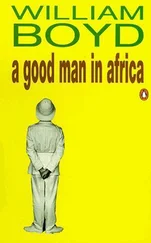When the cycling craze hit America in the 1890s the two brothers, who had initially gone into printing as a profession, opened a bicycle shop in downtown Dayton that was soon a flourishing business where they manufactured and sold their own brand of bicycle. It seems that the ease with which they had triumphed in this area of transportation caused them to look elsewhere for another challenge. And aerial navigation, as it was then referred to, was what took their fancy.
The myth has it that it was newspaper reports of the death in 1896 of Otto Lilienthal, the famous German glider, that concentrated the brothers’ minds on flying machines. Lilienthal did indeed do much to pave the way for powered flight with his scientific formulations of surface pressures and wing construction but powered flight, by the end of the nineteenth century, seemed as remote a possibility then as turning base metal into gold was in medieval Europe. H. G. Wells however, in a celebrated essay in 1901, predicted that the first aeroplanes would take to the air long before the year 2000: 1950 was his educated guess.
So the Wright brothers applied their minds to the problem of powered flight and sent off to the Smithsonian Institution for whatever literature on the subject was available in May 1899. The Smithsonian duly responded and sent along four slim pamphlets, free of charge. In this context of almost total ignorance the fact that just four and a half years later the Wright brothers’ own powered flying machine took off from the sands of Kitty Hawk almost defies belief and is perhaps the most effective testimony to the cool practicality, the commonsensical thoroughness of their unique cast of mind.
For they were not alone: in France, Germany, England and the USA would-be aviators were all trying to make the next step from manned gliders. Lilienthal had made over 2,000 glides; Englishman Percy Pilcher had glided 750 feet from the top of one hill to another, in the States Samuel Langley had successfully flown thirty-pound steam-powered model aeroplanes and Octave Chanute was developing manned gliders to carry on from where Lilienthal’s premature death had left the science.
Broadly speaking, all these experimenters were making a conceptual error about the prospect of flight. They tended to view the air much as they would the sea: something to be ridden much as a boat rides the waves. Langley hoped his flying machines would harness the “internal work of the wind” and even be able to circumnavigate the globe without landing. Chanute built a six-wing glider with wings that could move as the air currents buffeted them. The pragmatic Wrights, however, approached matters differently. They saw everything as a fundamental problem of control, that there was little purpose in providing any kind of glider with power if you didn’t know what to do if and when you suddenly found you were flying. The first models they made in 1900 were large kites and then they quickly evolved into building unmanned gliders which they flew with ropes attached and finally manned gliders, taking to the air on the dunes of Kitty Hawk, making many glides of over 200 yards and staying aloft for half a minute at a time. Back in their bicycle workshop in Dayton they analysed the information they had gleaned and, as they built a new flying machine each year, steadily modified its design.
Because they concentrated on controlling the flying machine the brothers quickly encountered the key inherent problems of sustained flight. Control has to be organized around three axes, lateral, vertical and longitudinal, or, put in nautical terms, the pilot has to be able to control pitch, yaw and roll. What the Wright brothers achieved, to simplify drastically, during their gliding experiments in 1901 and 1902 at Kitty Hawk was a method of controlling movement in these three dimensions. Only by controlling all three dimensions, for example, is it possible to make a banked turn in a flying machine. In the gliders of Lilienthal, Pilcher and Chanute the only way of exercising control was for the pilot to hang by his arms and thrash his body around to disturb the centre of equilibrium. A dangerous manoeuvre in any event as both Pilcher and Lilienthal died in gliding crashes. In the powered “hops”—where the flying machine left the ground for a second or two — of such pioneers as Langley and Maxim there was simply no time to demonstrate control.
But in 1902 in the dunes of Kill Devil Hills Orville and Wilbur Wright were turning and banking their big glider right and left with remarkable consistency. They were able to do this through the process they called “wing-warping,” a precursor of the modern aileron, where cables controlled by lateral movements of the hip cradle twisted the ends of the wings, pulling one into a positive angle and the other into a negative, or vice versa, with wind pressure then causing the wing with the positive angle to lift, and the wing with the negative to dip — and so the turn begins.
In the course of their four years of work the brothers made many discoveries about the mystery of flight, and, amongst other achievements, built their own four-cylinder engine and tested wing cross-sections in their own wind tunnel, but it was their development of the three-dimensional system of aeroplane control — the basic system that still operates all winged transportation today — that really marks them out as the great progenitors, the first true flyers.
The epochal day of 17 December 1903 did not end with Orville’s sinuous 120-foot flight. In true Wright fashion the damaged skid was swiftly repaired and the Flyer carried back to the launching rail for another attempt. Three more flights were completed, the third being the most remarkable. This time Wilbur piloted the Flyer and by now he had become more accustomed to the sensitive front elevator. The Flyer took off, its course through the air less undulating, and puttered off across the sandy plain at a speed of no more than ten miles an hour. Wilbur had flown nearly 300 yards when, once again, a slightly over-enthusiastic adjustment of the controls brought the machine down to earth, badly damaging the front struts that held the elevator. That was that for the day, and for 1903, as it turned out, for the Flyer was further damaged when, as the men were replacing it in its shed, a powerful gust of wind flipped it over on its back.
In many ways the fourth flight of that December day deserves the real prominence in the history of aviation. It lasted fifty-nine seconds and covered 852 feet and if anyone ever doubted that the Flyer was capable of sustained flight then Wilbur’s effort at the end of that memorable day would have quashed them completely.
Of course the 1903 flights were only the beginning of the Wright brothers’ story. New Flyers were built and tested and by 1905 the Flyer III was capable of staying aloft for half an hour at a time and flying many miles. As news of the brothers’ achievements began to be broadcast to an incredulous world so too did the atmosphere of envy, malice, bad faith and cupidity that attends most great innovators begin to gather round them. Sceptics at home and abroad refused to believe these taciturn bicycle makers from Ohio had conquered the air; former colleagues strove to hog the limelight; less successful aviators stole their ideas. Lawsuits, patent battles, controversy, claim and counter-claim continued to dog their lives for many years. Even in the 1930s there was a systematic effort to discredit their achievements when the so-called “lost” flights of Gustave Whitehead (it was suggested, quite fraudulently, that he had flown half a mile in 1901) were advanced as the true precursors of aviation history. But the Wright brothers, true to their natures, worked on relentlessly, steadily perfecting their flying machines until the technology they had initiated eventually superseded them. Wilbur died in 1912 of typhoid fever. Orville lived on until 1948, the grand old man of American aviation, surviving long enough to see the astonishing progress of his invention and see what contribution — good and bad — it had made to the history of the twentieth century.
Читать дальше












